Croatia Logs 73 New Cases, Two COVID-19 Related Deaths
ZAGREB, 23 Aug 2021 - In the past 24 hours, 73 coronavirus cases and two COVID-related deaths have been registered in Croatia, the national COVID-19 crisis management team said on Monday.
The number of active cases is 2,436 and there are 307 hospitalized patients, including 42 on ventilators, while 6,992 persons are self-isolating.
To date, Croatia has registered 369,838 coronavirus cases and 8,303 deaths, while 359,099 persons have recovered from COVID-19, including 330 in the past 24 hours.
To date, 2,470,457 persons have been tested for the virus, including 3,884 in the last 24 hours.
To date, 3,212,783 vaccine doses have been administered, with 41.83% of the population vaccinated, including 50.26% of adults.
One dose has been administered to 41.83% of the total population or to 50.26% of the adult population while 1,579,035 persons have been fully vaccinated, which is 46.81% of the adult population.
For all you need to know about coronavirus specific to Croatia, including travel, border, and quarantine rules, as well as the locations of vaccination points and testing centers across the country, make sure to bookmark our dedicated COVID-19 section and select your preferred language.
Salinity Measurements of the Adriatic Sea Record an Unprecedented Increase
August 23, 2021 - Are the high levels of salinity in the Adriatic a threat to fisheries and marine flora and fauna? Recent salinity measurements show an unprecedented increase, and this is a red flag.
Through a report by Novi List, scientific advisor to the Ruđer Bošković Institute Dr. Ivica Vilibić, analyzes the results of an investigation that has been conducted since 2017, investigating high levels of salinity measurements in the Adriatic Sea and the impact on fisheries, as well on the marine fauna and flora.
Temperature - which has also risen in recent decades - affects the living world. Namely, the Adriatic is becoming home to species of warmer seas, which entered and are entering from the Red Sea into the eastern Mediterranean through the Suez Canal, and will be brought to the Adriatic by currents, says Dr. sc. Ivica Vilibić
The Adriatic is saltier than ever before since salinity has been monitored - are the results of research by Croatian and Italian scientists, published in the prestigious journal Frontiers by Marine Science, which deals with the biology of the sea and water.
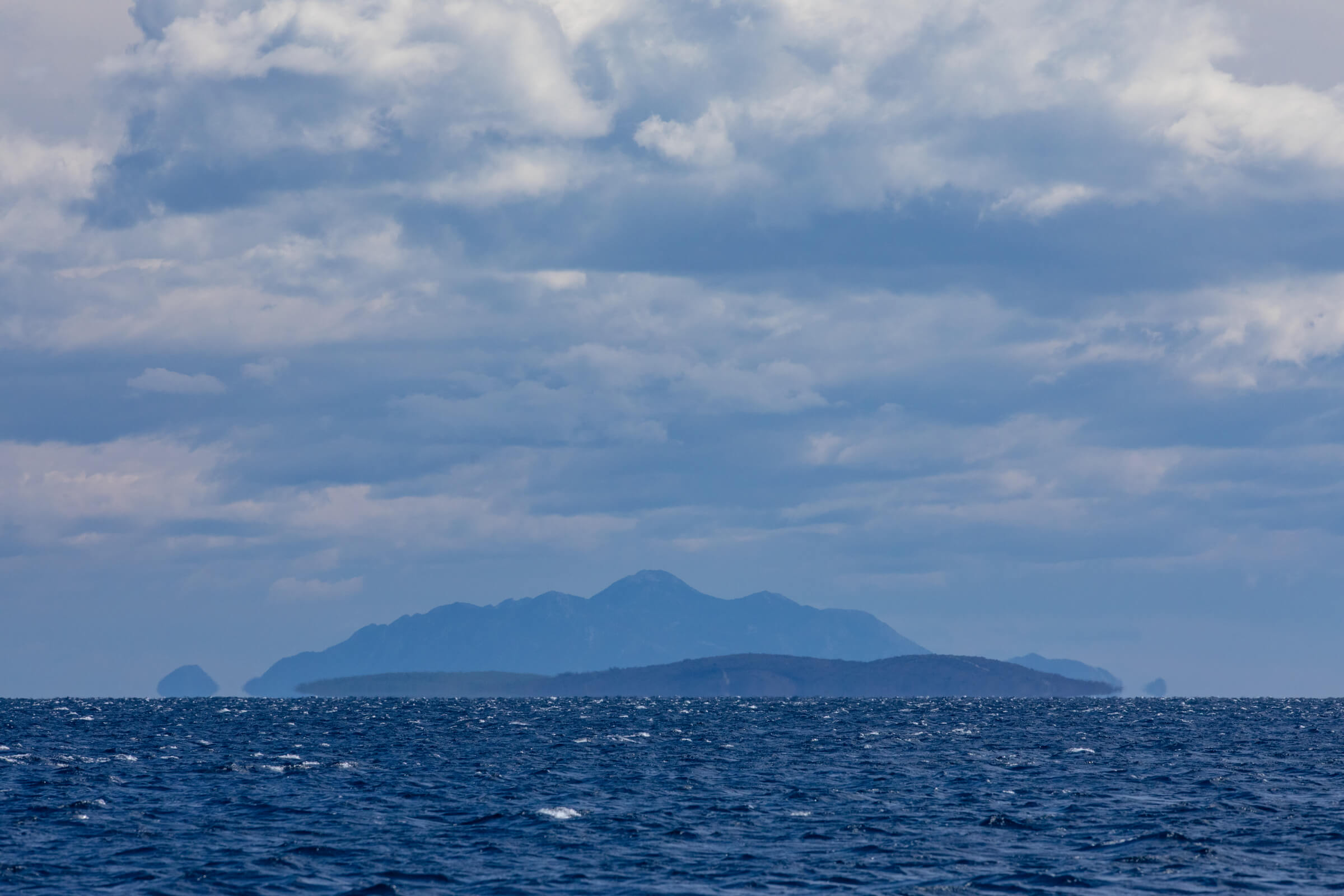
Photo: Mario Romulić
In this interdisciplinary research, led by Dr. sc. Hrvoje Mihanović from the Institute of Oceanography and Fisheries from Split, and with dr. Sc. Ivica Vilibić from the Ruđer Bošković Institute, researchers from the University of Split and Zagreb, and the National Institute of Oceanography and Applied Geophysics in Italy also participated.
Researchers point out that the continuity of salinity measurements in the Adriatic has existed since the 1950s, to the present day, on several climatological profiles in the northern and central Adriatic, and on the profile from Rovinj to the Po River in Italy and on the Palagruža threshold salinity is measured monthly or seasonally. these researches were the basis of many findings from oceanography.
''Such long time series are actually rare in the world and invaluable in today's era of climate change'', it was pointed out in the announcement of the Ruđer Bošković Institute, on the occasion of the publication of the research results.
During the research, the scientists analyzed a number of available data, and the analysis included measurement data by marine multiparameter probes, autonomous vertical-sampling floats (so-called ARGO floats), remotely controlled oceanographic submarines (so-called gliders), satellites that measure sea level, as and data obtained by an oceanographic model of the Mediterranean that assimilates satellite and other measurements and therefore provides the highest quality representation of three-dimensional oceanographic fields.
This research is funded by the HRZZ projects ADIOS, MAUD, BivACME and ISLAND, CAAT, and HIDROLAB projects funded through the European Structural and Investment Funds, the MOCCA project funded through the European Maritime and Fisheries Fund, and the ArgoItaly program funded by the Italian Ministry of University and Research.
The occurrence of extremely high salinity measurements was recorded in 2017 when in the Southern Adriatic and on the Palagruža threshold the concentration of more than 39 per mille of salt in seawater was measured, which was the first time that such high values were measured in the Adriatic Sea layer, to a depth of thirty feet.
According to the Institute, it is common in the much saltier and warmer Levant, where the saltiest water in the Mediterranean, the so-called Levantine intermediate water, is created. In October 2017, the salinity measurements in the surface layer on the Palagruža threshold reached record values, which were more than 39.1 per mille. In addition, with minor oscillations, high salinity in the first two hundred meters of the sea has remained in the central and southern Adriatic until today. At the moment, the salinity measurements in the central part of the southern Adriatic are higher than 38.8 per mille in the entire water column, and along the surface, it reaches 39.15 per mille.
Causes of salinity measurements increase include:
- Climate change
- Natural changes in the circulation in the Ionian Sea
- The reduced inflow of fresh water from rivers flowing into the Adriatic in the period of one year before the occurrence of high salinity
- The inflow of solar energy to the sea surface during summer and early autumn, when the weather is warmer than average and with little wind
''This sudden increase in salinity measurements recorded since 2017 is partly caused by climate change and partly by natural changes in the circulation in the Ionian Sea. Namely, in the last ten years, an exceptional increase in salinity has been recorded in the eastern Mediterranean, and these water masses have begun to overflow into the Adriatic. This increase in salinity measurements, as well as the constant increase in salinity that we have seen in the Adriatic in the last hundred years since the measurements began, have certainly been caused by climate change. In addition, there are natural oscillations of salinity in the Adriatic, which change salinity upwards or downwards every 5 to 10 years, and we are currently in a period of slightly increased salinity due to currents in the northern Ionian Sea'', says Ivica Vilibić, one of the research participants.
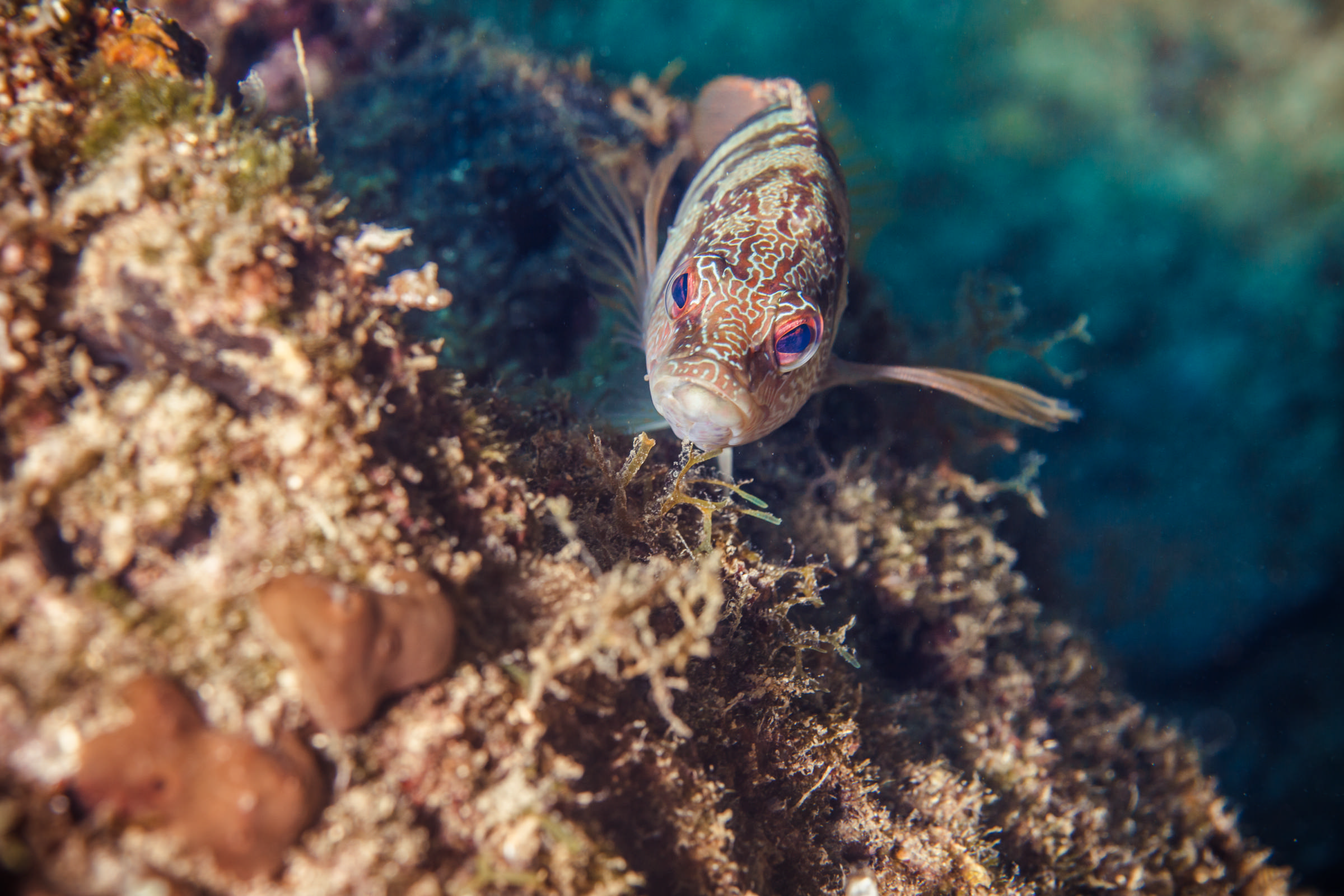
Photo: Mario Romulić
In addition to these processes, the scientists concluded, the increase in salinity is "due" to the reduced inflow of fresh water from rivers flowing into the Adriatic in the period of one year before high salinity, and the cause of reduced inflow is reduced rainfall in the wider Adriatic and basins. the rivers that flow into it. Another process that increases salinity refers to the pronounced inflow of solar energy to the sea surface during summer and early autumn, when the weather is warmer than average and with little wind, or with weak vertical mixing in the sea column and stratification of the water column on the extremely warmer surface, and a cooler middle and bottom layer. Consequently, a process occurs that involves pronounced evaporation and loss of water from the sea surface.
Regarding the consequences of the appearance of invasive species, one of the most famous and devastating cases took place in the Black Sea, where the finch (Mnemiopsis leidyi) was first observed in the early 1980s. It is a small animal, resembling a jellyfish, seemingly harmless, because it neither has jellyfish-like jellyfish, nor feeds on fish, but in the Black Sea it multiplied in such quantities that it almost completely destroyed the fund of small fish, feeding on plankton, which is why there was enough food for anchovies and sardines, and their disappearance led to the collapse of part of the fishing industry in Turkey, Bulgaria, and Romania. Ribs, under favorable conditions, reproduce at an explosive rate, literally snatching food from small blue fish and other marine organisms that feed on plankton, which has consequences for other marine animals that feed on small blue fish. Ribs have also been spotted in the Adriatic in recent years, for the first time in 2005, in the Gulf of Trieste, but the population appears to be controlled by Beroe ovata, a species of jellyfish that is a major predator of ribfish and prevents their uncontrolled reproduction.
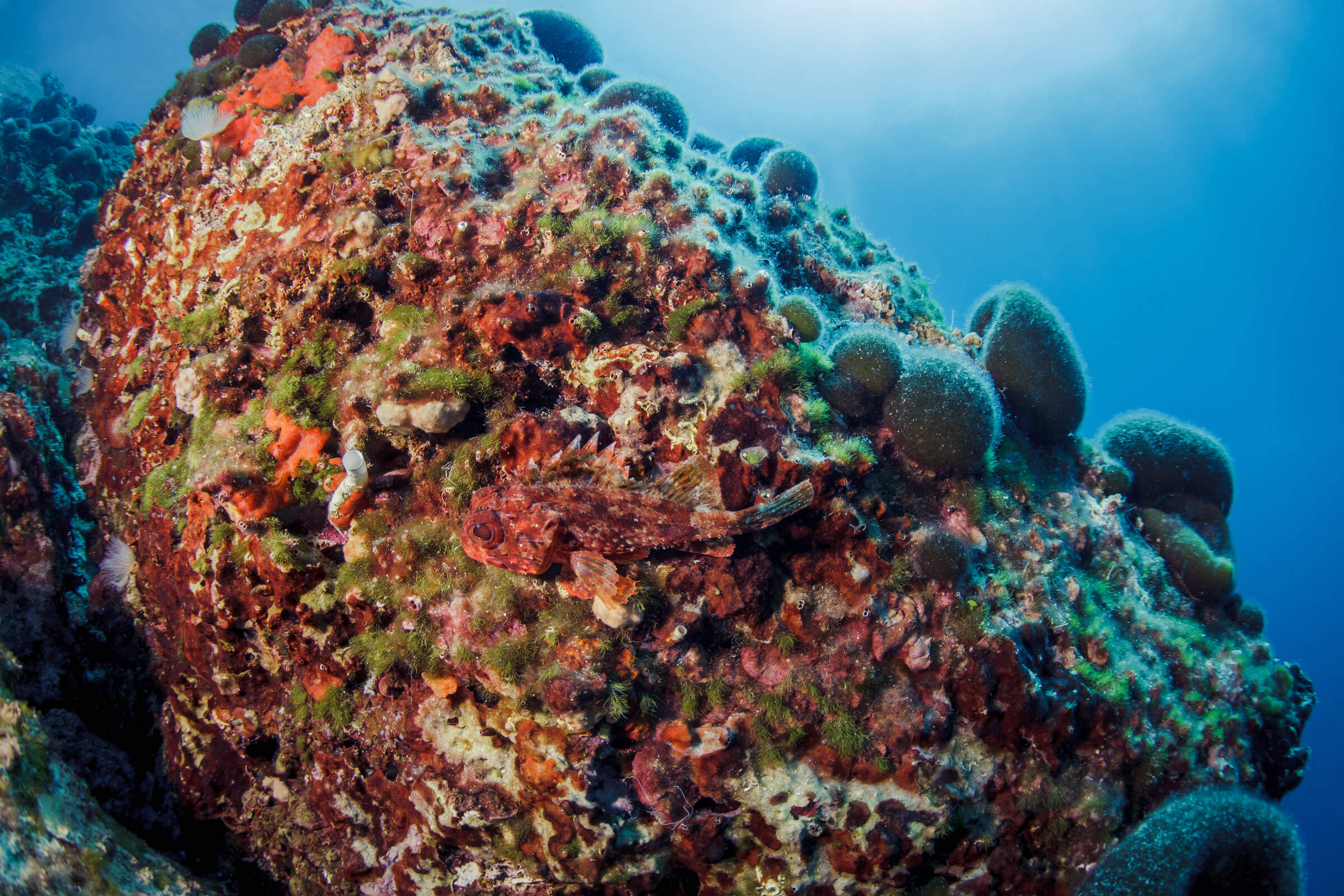
Photo: Mario Romulić
Of the four main processes leading to increased salinity, as many as three have already been documented in the Mediterranean as a direct result of climate change, and scientists warn that they will bring even warmer and drier summers, lower river flows, and consequently stronger surface warming and salinization. As life in the sea, they point out, from plankton to fish to bacteria, is dependent on temperature, salinity, and available nutrient salts, the observed changes will certainly have a significant impact on life in the Adriatic. Such effects have already been recorded and documented in the last few decades, for example, the entry of new fish species, changes in the relationships and abundance of bacterial communities, the extinction of colder sea species.
Vilibić adds that the consequences of the increase in salinity have yet to be thoroughly investigated, but in combination with the warming of the sea, they could be far-reaching for Adriatic species, and
''It is difficult to quantify the impact of increasing salinity on the living world in the Adriatic because the relationships in the food chain are insufficiently known in the current climate. What we do know is that the increase in salinity has a significant effect on the amount and composition of bacterial communities, invisible to the human eye and a significant component of the food chain. Their hitherto unrecorded anomaly was investigated during 2017, but it can be assumed that such a situation continued. In a way, these communities are equivalent to bacteria and microorganisms in our body, which is why we survive in symbiosis - so in the sea, larger individuals are dependent on the entire food chain, the smallest, but how and how much - it is the subject of research. We know too little to say with certainty that increasing salinity will shape Adriatic living communities in the future climate. But what we know better is how temperature - which has also risen in recent decades - affects the living world. Namely, the Adriatic becomes home to species of warmer seas, which entered and enters from the Red Sea into the eastern Mediterranean through the Suez Canal, and are brought to the Adriatic by currents. Let's hope that these changes will not be as strong as in the Black Sea, where the arrival of certain such species caused the collapse of fisheries'', says Vilibić.
The appearance of foreign or rare species in the Adriatic has become more frequent in recent years, with the "movement" of species to which the warmer sea corresponds further and further north being noticeable. This summer, the public's focus was on the appearance of fireflies or sea peacocks, a tropical species characterized by unusually long, venomous spines that, similar to spiders or groupers, cause severe pain in people who are stung.
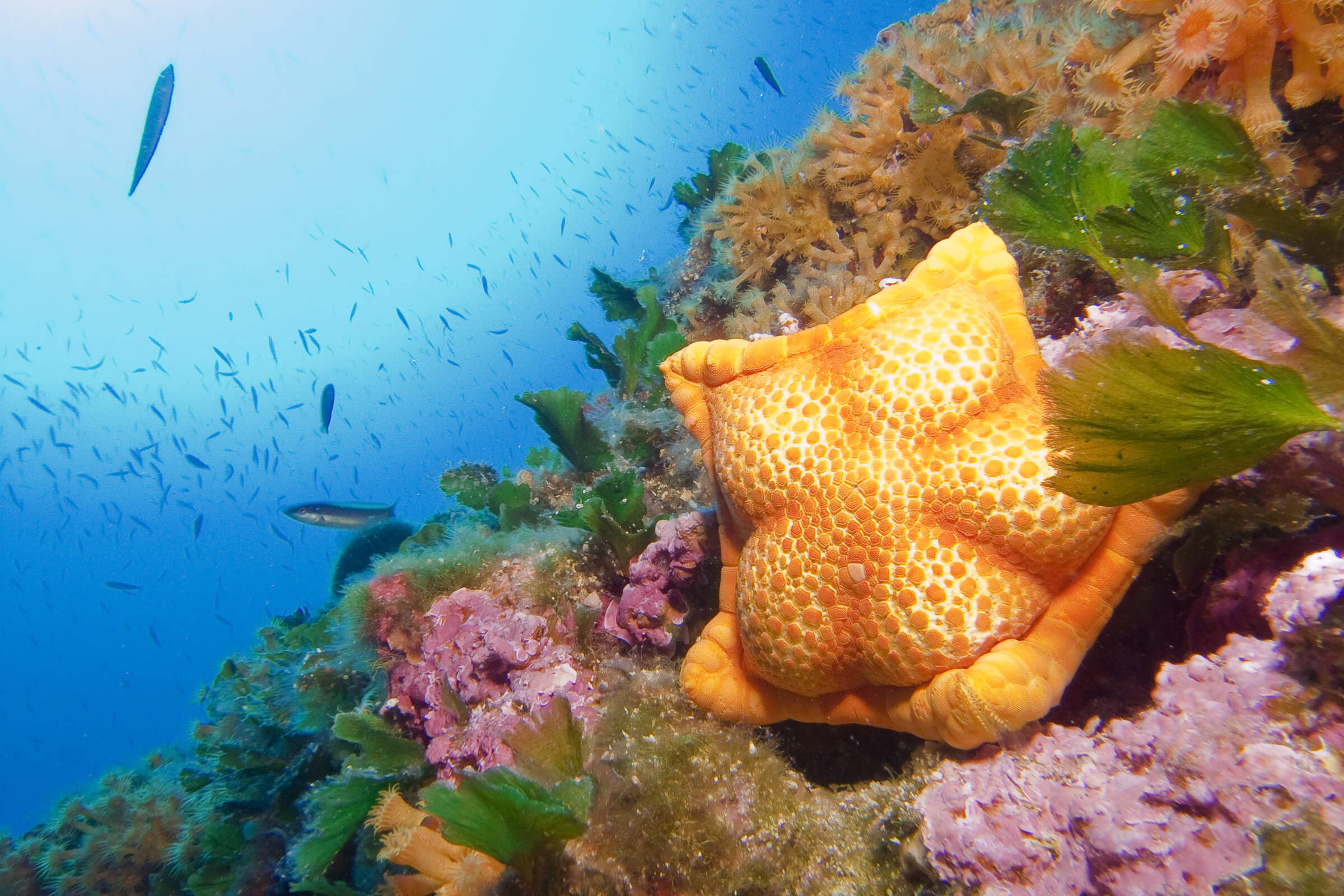
Photo: Mario Romulić
The firefly arrived in the Mediterranean from the Red Sea, and as an invasive species it appeared in several areas around the world, and as it is a predator that has no natural enemies in the new areas, it has a detrimental effect on smaller fish, crabs, cephalopods and other marine organisms. which it feeds on. In the US state of Florida, there is a whole campaign to catch this invasive species, under the slogan "Eat them to beat them!", Which encourages the local population to consume this, for the environment, as people who they carelessly handle dangerous but supposedly very tasty fish species.
As for the impact on domestic fisheries and mariculture, he says the direct impact of man, through overfishing of marine organisms, is as big a problem as changes in environmental properties.

Dino Stanin/PIXSELL
''In fact, we know more about the former - there are many studies on it - while the impact of climate change on fisheries is still the subject of research. As for mariculture, which is becoming more common in the diet, compared to fish caught outside the cage, it will be easier to adapt to the new climate, because there are species in the oceans that tolerate warm seas and are suitable for farming, such as tuna. So, unlike fisheries, the survival of mariculture is a matter of adaptability to the changing environment, while the survival of fisheries is a matter of acting on environmental changes themselves, the latter being largely beyond our control because climate change will occur regardless of fisheries policy in the Adriatic. In that sense, global actions are needed in relation to the drivers of climate change, according to which we hope that the world will start and start acting'', concludes Vilibić.
For more news about Croatia, click here.
Showers, Winds, and Thunderstorms: Weather in Croatia Starts to Change This Week
August 23, 2021 - This year's very hot summer will be interrupted this week by a few days of rain and thunderstorms, perhaps marking the beginning of a slow transition to lower temperatures as the weather in Croatia begins to change.
Despite still feeling the high temperatures throughout the country, it could be said that intolerable heat waves are a thing of the past. During June, July, and the first weeks of August, both locals and tourists had to endure frequent temperatures between 34 and 38 °C. Now, recent forecasts indicate that the weather in Croatia will be milder, with temperatures hardly exceeding 30 °C.
Also, the nights begin to be cooler, the mornings colder, and the sky begins to darken a little earlier than before.
Although the high temperatures attracted both Croatians and foreigners to take a dip in the Adriatic, as well as in the lakes and rivers, it is worth mentioning that they brought with them difficulties such as fires along the Croatian coast.
As reported by 24sata.hr, gradual cloud cover from the northwest with occasional rain and showers, which may be more pronounced locally. In the east of the country and especially in Dalmatia most of the day is partly sunny and mostly dry.
On the mainland, a moderate, in some places moderate and strong north and northeast wind will blow from time to time. The moderate south wind in the northern and part of the central Adriatic will turn into a moderate and strong bora, under Velebit and with storm surges.
The highest daily temperature from 23 °C in the western parts of the interior to 29 °C in the east, and in the Adriatic and in the interior of Dalmatia from 27 to 32 °C, is the forecast of the State Hydrometeorological Institute (DHMZ) for Monday.
Today, a yellow meteorological alarm was issued for almost the whole of Croatia, except for the extreme south, while an orange alarm was issued due to the strong wind in the Velebit Channel.
Tomorrow will be changeable with sunny periods. Occasional rain, showers, and thunderstorms, especially in Dalmatia, in the morning in Slavonia.
Wind mostly weak north, moderate in the Adriatic, in the northern part, and strong bura with storm gusts mainly at the foot of Velebit, and in the south and northwest. Lowest temperatures from 12 to 17, at sea between 19 and 24 °C. The highest daily is from 19 to 24 °C, on the Adriatic between 26 and 31 °C.
If you want to learn more about the weather in Croatia, be sure to check out Total Croatia's guide here.
HNL Round 6 Recap: Hajduk in 1st After Istra 1961 Shocks Osijek 2:0
August 23, 2021 - The 6th round of the Croatian First League was held from August 20 to 22, 2021. This round saw Hajduk move to 1st place in the standings after Istra 1961 shocked Osijek with a 2:0 win. Here's our HNL round 6 recap.
Hrvatski Dragovoljac v. Hajduk (0:1)
Hr. Dragovoljac and Hajduk opened the 6th round in Zagreb on Friday, August 20, 2021, in front of 990 (mostly Torcida) spectators.
While Hajduk sat in Dragovoljac's half for the entire game (bar a few plays), the only goal of the match came in the 5th minute of added time (90+5'), when Simic scored off a corner kick for the Hajduk win.
Dragovoljac is currently in the last place with 0 points, while Hajduk is in 1st with 13.
Gorica v. Slaven Belupo (1:0)
Gorica and Belupo met in Velika Gorica on Saturday, August 21, 2021.
While the first half went without goals, Dvornekovic scored for 1:0 Gorica in the 66th minute, which was the final result.
Gorica is currently in 6th place with 9 points, while Belupo is in 8th with 5.
Dinamo v. Lokomotiva (1:0)
Dinamo and Lokomotiva met at Maksimir on Saturday, August 21, 2021.
It was yet another match where the first half went without goals, and Oršić only scored for Dinamo in the 77th minute for the 1:0 win.
Dinamo is currently in 10th place with 10 points (and one game less), while Lokomotiva is in 3rd with 10 (and one game less).
Istra 1961 v. Osijek (2:0)
Istra and Osijek met in Pula at the Aldo Drosina Stadium on Sunday, August 22, 2021.
No goals were scored in the first half, and Istra's first goal didn't come until the 84th minute when Bande scored for 1:0. Miskovic increased Istra's lead in the 4th minute of added time (90+4') for the final score of 2:0.
Istra is currently in 7th place with 6 points (and one game less), while Osijek is in 2nd with 13 points.
Rijeka v. Sibenik (2:1)
Rijeka and Sibenik closed out the 6th round on Sunday, August 22, 2021, at Rujevica Stadium.
After a scoreless first half, Delic put Sibenik in the lead for 0:1 in the 47th minute. Drmic equalized in the 64th for 1:1, and Busnja put Rijeka in the lead at 2:1 in the 76th minute for the win.
Rijeka is currently in 5th place with 10 points (and one game less), while Sibenik is in 9th with 4.
You can see the full HNL table HERE.
To follow the latest sports news in Croatia, follow TCN's dedicated page.
To learn more about sport in Croatia, CLICK HERE.
Michael Jordan in Split, Boards EUR 1 million/week Yacht (PHOTOS)
August 23, 2021 - After Magic Johnson arrived last summer, arguably the greatest basketball player of all time has arrived in the Dalmatian capital. A look at Michael Jordan in Split.
NBA legend and Chicago Bulls star Michael Jordan (58) arrived in Split on Sunday night. Arguably the greatest basketball player of all time then set off in one of the three vans that met him on the West Coast Riva in Split, where the O'Pari yacht awaited Jordan and his group.
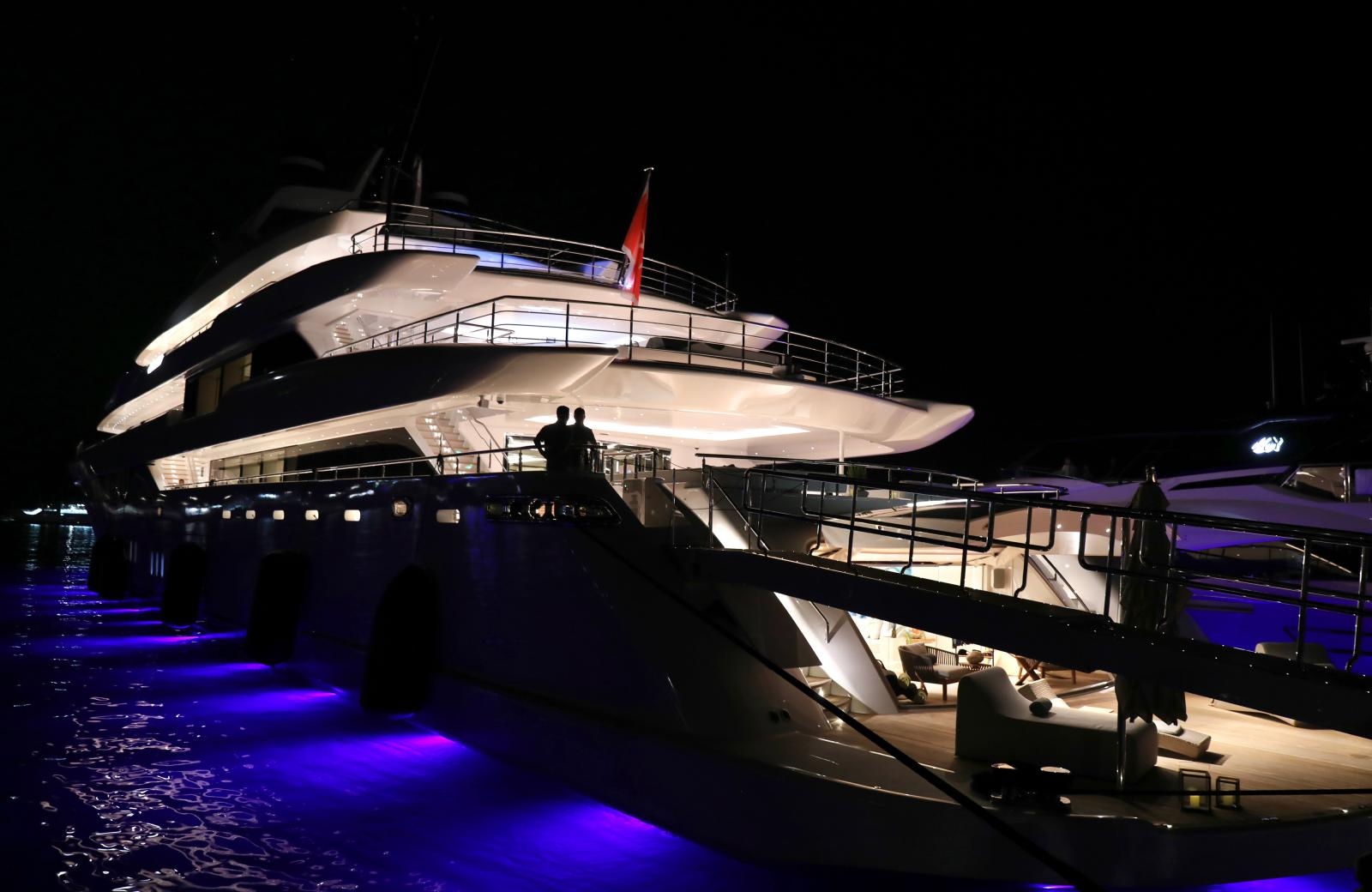
Ivo Cagalj / PIXSELL
O'Pari was built in 2020, and is 95 meters long, and has six decks. Its weekly rent will set you back around one million euros.
As expected, Jordan's arrival immediately caused euphoria in the city. Last year, Magic Johnson visited Split, and before him, many other great international athletes were seen, but no one quite as big as Michael Jordan, who is holidaying on the luxury yacht in the company of his wife, Yvette Prieto.
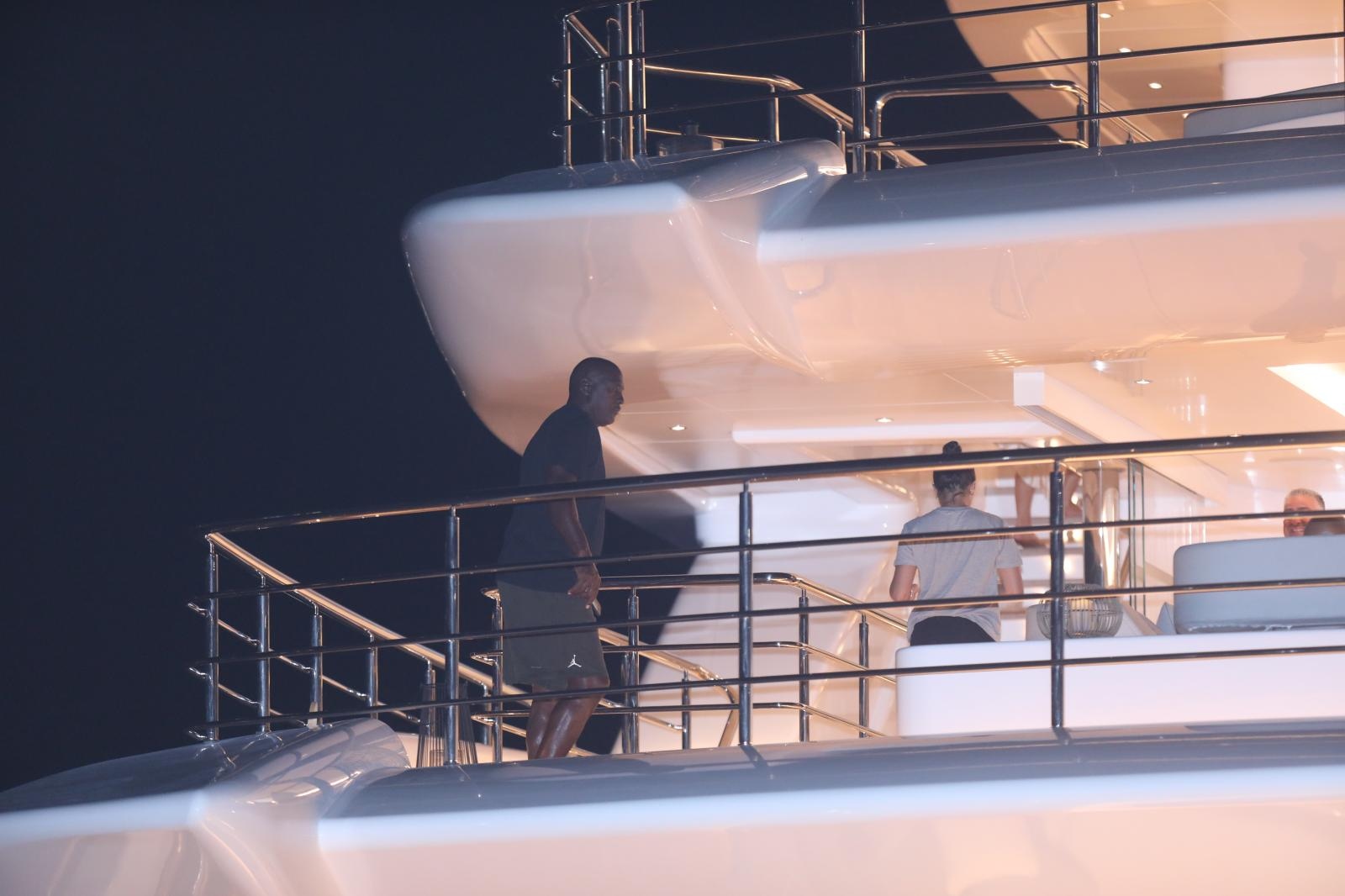
Ivo Cagalj / PIXSELL
It is likely that Jordan will meet Toni Kukoč in Split, his former Bulls teammate, but also one of his favorite partners on the golf course.
They may also consider the induction protocol to the Basketball Hall of Fame. After it was announced in May that Toni Kukoč would be inducted into the Basketball Hall of Fame in Springfield, Illinois, it was announced that one of the greatest basketball legends to live would introduce the Croatian basketballer to the Hall of Fame.

Ivo Cagalj / PIXSELL
Namely, Kukoč will be presented by Michael Jordan, his Chicago Bulls teammate, and Jerry Reinsdorf, longtime owner of the Bulls. The three will join each other on stage during the ceremony on September 11, 2021, at the MassMutual Center.
Along with Kukoč, who owns three NBA rings, the 2021 class includes Val Ackerman, Rick Adelman, Chris Bosh, Bob Dandridge, Cotton Fitzsimmons, Howard Garfinkel, Yolanda Griffith, Lauren Jackson, Clarence Jenkins, Pearl Moore, Paul Pierce, Bill Russell, Ben Wallace, Chris Webber, and Jay Wright.
Source: Jutarnji List
For more on lifestyle in Croatia, follow TCN's dedicated page.
President: No Mistake in Strategy in Afghanistan, but in Planning and Executing
ZAGREB, 22 Aug, 2021 - President Zoran Milanović said in Barban on Sunday that the decision to withdraw from Afghanistan was not contentious, but mistakes were made in planning the exit from that country and evacuating Afghan associates of the international forces.
"This is not a mistake of the strategy, but a mistake of planning and executing. It's been known for quite some time that (the United States) was leaving Afghanistan, Biden inherited what Trump left, and he too was in favour of withdrawing," Milanović said, recalling that Croatia withdrew from Afghanistan over a year ago.
"I said in my election campaign that as the army supreme commander I would do that, the government did not object. It was clear that this needed to be wrapped up. I had the privilege of being one of those at the farewell ceremony for our soldiers in 2003 and in the end, the person who decided to end Croatia's involvement in Afghanistan," Milanović said.
Asked if Croatia should receive Afghan refugees, Milanović said that in his opinion refugees should go to the biggest countries.
"All of them should find their place in the United States. We can symbolically receive a small number of people. It is no longer 2015," Milanovic said.
He said he would always accept a small number of people. "This is why I don't understand and I cannot accept when someone says that we should accept noone. We need to be humane but also have our interests in mind;" the president said in Barban where he attended the 46th edition of the Prstenac tournament.
For more on politics, follow TCN's dedicated page.
For more about Croatia, CLICK HERE.
Croatia’s Marendić Wins Silver Medal at 2021 ILCA 4.7 Youth World Championships
ZAGREB, 22 Aug, 2021 - Croatian sailor, 16-year-old Petra Marendić, a scholarship holder of the Marin Čilić Foundation in the 2020/21 generation, achieved great success by claiming the silver medal at the 2021 ILCA 4.7 Youth World Championships in Ireland.
"This is my first medal from the world championships and I'm truly happy because of it," said Marendić, who is a member of Split's Mornar sailing club.
Last year, Marendić won the title of youth European champion in Portugal.
For more on sport, follow TCN's dedicated page.
For more about Croatia, CLICK HERE.
Rimac Formula Student Alpe Adria 2021 Contest To Take Place in Novi Marof
ZAGREB, 23 Aug, 2021 - An automotive contest called "Rimac Formula Student Alpe Adria 2021" will take place in the northern Croatian town of Novi Marof on 26-29 August, bringing together 37 teams from 14 European countries.
This will be an opportunity for 850 undergraduates in those 37 teams to promote bolid cars they have made at their universities, the organisers have said at a recent news conference in Varaždin.
"The project intends to showcase the most innovative solutions in the auto industry, prepared by students from all over the world. Rimac Formula Student Alpe Adria is a variant of this project," said Tibor Kezelj, the head of the Varaždin-based FSAA association that organises the Croatian variant of the Formula Student, a student engineering competition held annually
Student teams from around the world design, build, test, and race a small-scale formula style racing car. The cars are judged on a number of criteria.
In Novi Marof, the jury includes judges from Formula 1 and other top-notch judges from the automobile industry.
Kezelj said that the contest also promotes the STEM sector in Croatia.
The sponsors of the event are the Rimac Automobili company and local authorities in the town of Novi Marof and Varaždin County.
For more on lifestyle, follow TCN's dedicated page.
For more about Croatia, CLICK HERE.
The 19th Liburnia Film Festival Kicks Off in Opatija
August 22, 2021 - The 19th Liburnia Film Festival starts tomorrow in Opatija, with 44 Croatian documentaries on the program, 22 of which are in competition for awards.
Documentaries in competition for festival awards: the best film is chosen by the jury and the audience, the best direction, photography, editing, sound design, and the best regional film, will be shown on the small Summer Stage in Opatija, writes HRT Magazin.
The five-member international jury consists of art historian and curator Branka Benčić, editor and director Vladimir Gojun, director and artistic director of Beldocs Marko Grba Singh, organizer of film programs and representative of the Kinedok network Szabolcs Szyrony and film critic Višnja Vukašinović.
The festival awards the best film and the audience award with a cash prize and Restart with a technical service for making DCP.
For the first time, AVC Zagreb is awarding authors for the best photography and best sound design with a voucher for the purchase of film equipment in the amount of 700 euros, and ACER Croatia will award the prize for the best editing.
As in previous years, the IDF Documentary Film Institute and the Balkan Documentary Center award the best director and the best regional film. All winners will receive an original statue of the Kastav artist Saša Jantolek.
On Friday, August 27, before the announcement of the best, the audience will watch two documentaries produced by the co-organizers of the Liburnia Film Festival of the Zagreb association Restart "Letters to Nicholas" Dunja Ivezić and "More than 35" by Timy Šarec.
The festival will close with the world premiere of Relje Dušek's film "Enrico Marotti: This is my voyage" about the world champion in windsurfing from Volosko.
The accompanying program includes a case study of Đuro Gavran's film "One of Us", as an introduction to the panel discussion "When Violence Lives at Home".
The festival continues the afternoon conversations of the audience with the authors of the films shown the previous day.
The accompanying film program includes the program of the Regional with documentaries from the Primorje-Gorski Kotar and Istria counties and a retrospective of films by Đuro Gavran.
The 19th Liburnia Film Festival is organized by the LFF Association, co-organized by Restart, and partnered by the Opatija Festival. It is supported by the Croatian Audiovisual Center, the City of Opatija, the County of Primorje-Gorski Kotar, the Society of Croatian Film Directors, AVC Zagreb, ACER Croatia, and other supporters.
Learn more about the 19th edition of the Liburnia Film Festival HERE.
For everything you need to know about filming in Croatia, in your language, be sure to check Total Croatia's page.
For more on lifestyle, follow TCN's dedicated page.
Croatia Logs 373 New Cases, Three COVID-19 Related Deaths
ZAGREB, 22 August, 2021 - In the past 24 hours, 373 coronavirus cases and three COVID-related deaths have been registered in Croatia, the national COVID-19 crisis management team said on Sunday.
The number of active cases is 2,695 and there are 275 hospitalised patients, including 35 on ventilators, while 6,761 persons are self-isolating.
To date, Croatia has registered 369,765 coronavirus cases and 8,301 deaths, while 358,769 persons have recovered from COVID-19, including 339 in the past 24 hours.
To date, 2,466,573 persons have been tested for the virus, including 9,397 in the last 24 hours
To date, 3,212,084 vaccine doses have been administered, with 41.82% of the population vaccinated, including 50.25% of adults.
One dose has been administered to 1,697,152 persons, while 1,578,699 persons have been fully vaccinated - 1,514,932 who have received both doses and 63,767 who have received a single-dose of the Janssen vaccine -- which is 46.80% of the adult population.
For more on COVID-19, follow our dedicated page.
For more about Croatia, CLICK HERE.


